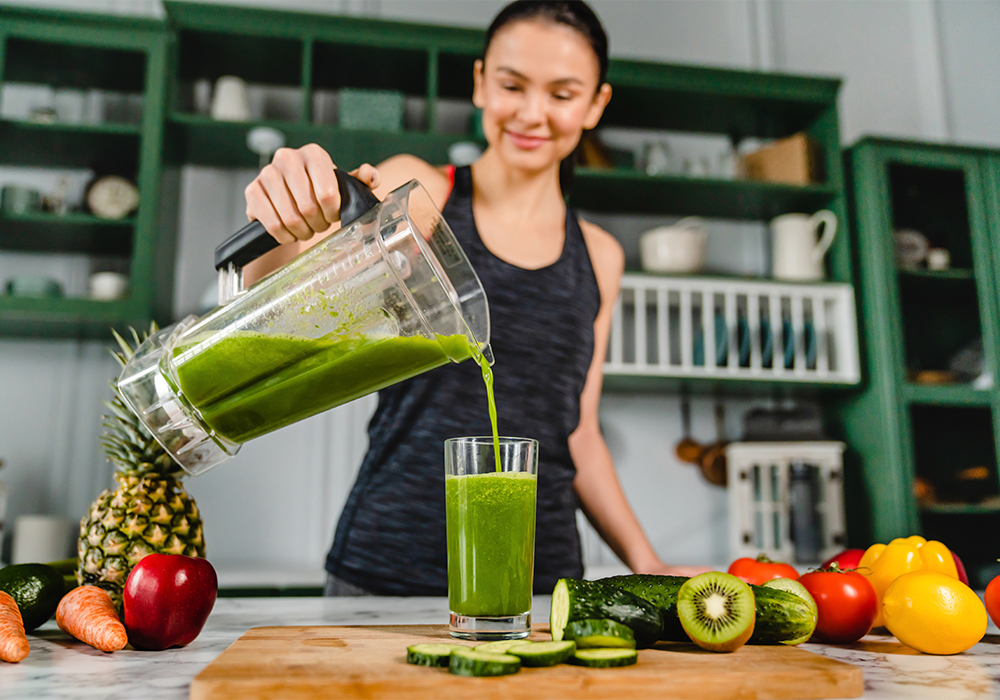Considering that 7% of Australia's disease burden is caused by poor diet, the cost of healthy eating is naturally something that governments are keenly interested in. Over the years, it's been a subject of debate and research. Is the cost of eating a nutritionally balanced diet out of reach for today's consumers?
In 2013, Harvard researchers found that an average family of four must spend an extra $2,000 yearly to eat 'healthy'.
Thankfully that's not the case today. Australia's Food Environment Dashboard shows that the cost of a diet consistent with the Australian Dietary Guidelines is the same as or less than the diet they currently eat. This is calculated based on a family of two adults and two children. It also holds for high socioeconomic areas, low socioeconomic areas, and very remote areas.
However, the Dashboard also reveals that eating a healthy diet can cost anywhere from 18% to 39% of the median household income. This figure is much more pronounced for low-income groups in rural and remote areas, impacting the affordability of healthy eating.
Recent research also shows that it costs 20% less for Queensland families to eat a healthy diet that follows the Australian Dietary Guidelines. Surprisingly, households spend around 60% of their food budget on discretionary choices. These foods are high in saturated fat and added sugar and salt.
Food choice drivers
Globally, food prices haven't been as high as they are now since June 2011. Australia is no exception. While affordability is certainly one piece of the puzzle in increasing the uptake of healthy eating, there's much more to the story.
Research consistently shows that health is front of mind for many consumers. They're looking for premium, functional products that support physical and emotional well-being, particularly products with health benefits beyond nutritional value.
3 in 5 people avoid unhealthy foods. Compared to 5 years ago, more people are opting for nutritious snacks, rising from 31% to 36%. You may have noticed these trends in real-time in your sales data.
However, other consumer considerations are combined with cost and health benefits, including taste, convenience and availability. Products that hit more than one of these drivers will likely appeal to consumers trying to balance their household budget and busy lifestyle with health concerns.
So, does price matter as much as we think? Maybe value is what we should be assessing. And isn't there more value in eating healthier?
Appealing to the cost-conscious healthy consumer
Each individual will be guided by their values in their food choices. For those consumers where it is a question of healthy eating vs cost, what can you do to show value in your range?
A straightforward way is to integrate your healthy products alongside other brands rather than having a traditional health food section. This gives consumers a greater choice and the ability to easily weigh their considerations in directly comparing the product against the product.
This means showcasing brands like Mingle seasonings in the spice section or Vege Chips and Keto Naturals in the snack aisle. Including brands like Natural Evolution or PBCo. in your baking aisle may introduce consumers to new products. This same rationale can apply to any grocery segment in your store.
Healthy shelves, healthy sales
Order online or via our sales team at 1800 787 904. Alternatively, register for a wholesale account here.
Considering that 7% of Australia's disease burden is caused by poor diet1, the cost of healthy eating is naturally something that governments take a keen interest in. Over the years, it's been a subject at the centre of debates and research. Is the cost of eating a nutritionally balanced diet out of reach for today's consumers?
Research on the cost of healthy eating
In 2013, Harvard researchers found that an average family of four would need to spend an extra $2,000 a year to eat 'healthy'.2
Thankfully that's not the case today. Australia's Food Environment Dashboard shows that the cost of a diet consistent with the Australian Dietary Guidelines is the same as or less than the diet they currently eat. This is calculated based on a family of two adults and two children. It also holds for high socioeconomic areas, low socioeconomic areas as well as very remote areas.
However, the Dashboard also reveals that eating a healthy diet can cost anywhere from 18% to 39% of the median household income. For low-income groups in rural and very remote areas, this figure is much more pronounced impacting on the overall affordability of healthy eating.
Recent research also shows that it costs 20% less for Queensland families to eat a healthy diet that follows the Australian Dietary Guidelines. Surprisingly, households spend around 60% of their food budget on discretionary choices. These are foods that are high in saturated fat and with added sugar/salt.2
Food choice drivers
Globally, food prices haven't been as high as they are now since June 2011.3 Australia is no exception. While affordability is certainly one piece of the puzzle in increasing the uptake of healthy eating, there's much more to the story.
Research consistently shows that health is front of mind for many consumers. They're looking for premium, functional products that support physical and emotional wellbeing, particularly products with health benefits beyond nutritional value.3
3 in 5 people avoid unhealthy foods. Compared to 5 years ago, more people are opting for nutritious snacks, rising from 31% to 36%.5 You may have even noticed these trends playing out in real-time in your sales data.
However, combined with cost and health benefits are other consumer considerations, including taste, convenience and availability.2 Products that hit more than one of these drivers are likely to appeal to consumers trying to balance their household budget and busy lifestyle with health concerns.
So, does price matter as much as we think? Maybe value is what we should be assessing. And isn't there more value in eating healthier?
Appealing to the cost-conscious healthy consumer
Each individual will be guided by their own values in their food choices. For those consumers where it is a question of healthy eating vs cost, what can you do to show value in your range?
One simple way is to integrate your healthy products alongside other brands rather than having a traditional health food section. This gives consumers greater choice and the ability to easily weigh up their considerations in directly comparing the product against the product.
In practice this means showcasing brands like Mingle seasonings in the spice section or Vege Chips and Keto Naturals in the snack aisle. Including brands like Natural Evolution or PBCo. in your baking aisle may introduce consumers to new products. This same rationale can apply to any grocery segment in your store.
Healthy shelves, healthy sales
At Unique Health Products, we make it easier for you to do business and stay ahead of industry trends. We stock many leading natural health brands and offer a huge selection of healthy grocery products. You can purchase our range online 24/7, or call our friendly sales team on 1800 787 904. Don't yet have a wholesale account with us? You can register for one here.
Sources:
1. Australian Government Department of Health, 2021.
2. BMJ Open, 2013.
3. International Journal for Equity in Health, 2021.
4. Australian Government Australian Trade and Investment Commission, 2022.
5. IRi, 2022.
6. Nielsen, 2021.





